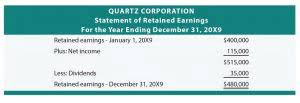Welcome to WordPress. This is your first post. Edit or delete it, then start writing!
Welcome to WordPress. This is your first post. Edit or delete it, then start writing!
New Post
È sufficiente che un pedone corresse verso la strada per il rosso, dato che un altro paio si stringerà dietro di lui. Le persone scelgono ristoranti, film, negozi, automobili, club sportivi, perché li hanno consigliati o li spagano con gli amici. Perché stiamo copiando il comportamento degli altri?
Sui social network, una chiamata #10yearchallenge: pubblica la tua foto ora e dieci anni fa. Questo movimento universale ricorda una palla di neve: più è più alta la velocità. Più partecipanti, più velocemente si diffonde il flash mob. Ciò che ci fa copiare il comportamento degli altri? Che tipo di forza invisibile attrae la linea del negozio e perché empatiamo con estranei, eroi di film, gatti e cani senzatetto?
Nel 1992, il neurobiologo italiano Dzhakomo Rizolatti fece un’apertura sensazionale di neuroni specchi per l’umanità. Queste sono cellule nervose che arrivano a uno stato di eccitazione sia dalla commissione dell’azione che dall’osservazione di questa azione. Incoraggiano la ripetizione delle azioni degli altri. Nel mondo scientifico, le controversie sono in evidenza del lavoro di questo sistema, se immaginiamo che questo sia un fatto indiscutibile, allora molti motivi del nostro comportamento diventano chiari.
Il motivo principale per la copia del comportamento è l’allenamento. Il bambino, a malapena nato, non è ancora in grado di realizzare le sottigliezze delle regole del soggiorno nella società. Impara tutto, copia il comportamento degli altri: pronuncia parole, usa un cucchiaio, vestito. Questo metodo di apprendimento ci consente di aggirare la comprensione delle ragioni per padroneggiare le abilità. Questa capacità di prendere in prestito l’esperienza delle generazioni consente di integrarti in qualsiasi livello di evoluzione a parità di condizioni. Siamo istintivamente programmati per imitare, in modo da non essere improvvisamente in ritardo rispetto alla vita.
Un altro motivo per la copia è stabilito dall’istinto di auto -conservazione. È più facile sopravvivere tra la folla, in natura è così disposto a preservare la specie: se si sentiva il pericolo, l’intero gregge, senza essere d’accordo, viene salvato dal volo. Perché è noto, se non tempo, le conseguenze possono essere deplorevoli. Sii come tutto sicuro.
Se tra le persone riunite nella luce rossa del semaforo, si darà segni di movimento, il cervello di altri pedoni invierà l’impulso ai muscoli alla riduzione e le persone faranno involontariamente un passo. Solo allora la sua valutazione di ciò che sta accadendo si verificherà. Ovviamente non puoi sottomettersi a questo riflesso e trattenerti, come, ad esempio, non sbadigliare in risposta allo sbadiglio, ma questo richiederà uno sforzo.
Nel marketing, una caratteristica di “mirror” del nostro comportamento viene spesso utilizzata molto spesso. “Saranfan Radio” è il modo migliore per diffondere informazioni. Molto spesso andiamo dove siamo stati consigliati e prendiamo ciò che abbiamo raccomandato. Da qui lo slogan pubblicitario: “scelta popolare”, “successo di vendita” o “professionisti consigliati”. Dà un segnale sulla necessità di acquistare le merci designate. Anche il Consiglio di una persona lavora, la cui scelta ci fidiamo. I personaggi famosi hanno sempre imitatori che scelgono shampoo, dentifricio o marchio di abbigliamento, che l’idolo preferisce.
E che interesse le code causano. È sempre curioso di venire a capire perché le persone si sono radunate. L’effetto contagioso dei neuroni specchio spinge l’acquisto. Gli esperti di marketing, conoscendo questo, creano in particolare folle ed eccitazione, facendo sconti in determinati
giorni, ore, danno un annuncio che “la quantità di merci è limitata”.
Una tendenza all’empatia: la capacità di provare i sentimenti degli altri, può avere manifestazioni diverse. Possiamo piangere per la compagnia e ridere. Empatia non solo persone e animali, ma anche eroi immaginari di film e libri. Il corpo reagisce con il rilascio di neurotrasmettitori e ormoni anche a sogni, fantasie, ricordi e pianificazione degli affari. L’azione dei neuroni specchi è uno strumento il cui lavoro dovrebbe essere compreso e usato consapevolmente. Puoi archiviare gli stati di risorse invece di opprimere in memoria, circondarci di ciò che motiva, dà forza, si sviluppa.
Buone notizie: quando si vedono esercizi sportivi, il corpo riflette, attivando i gruppi muscolari necessari per eseguire l’esercizio osservato, questo non solo motiva a muoversi, ma migliora anche i propri indicatori. Pertanto, guardare i canali sportivi non è una perdita di tempo. Questa tecnica può funzionare in terapia di restauro. Per tornare al normale più velocemente, è meglio guardare persone sane, attive e allegre.
Qualsiasi esempio è contagioso. Possiamo influenzare la qualità e il senso della vita con un approccio ragionevole alla scelta delle informazioni in arrivo. Guardare film e programmi televisivi, leggere libri e articoli, la comunicazione con le persone non è solo il passatempo, ma le linee guida per la vita che determinano il futuro.

And some events are less obvious like an uninsured business loss from flood damage, losing a lawsuit, etc. These events are often missed in financial reporting because they do not involve an immediate outlay of cash but however, sometime in the future cash will need to be paid to cover the losses. Any event that has an economic effect on the assets, liabilities or equity must be recorded.
If the buyer make payment before the goods or service is delivered, then according to the realization concept, the revenue is not going to be recognized. This is because there is a risk that the buyer may not receive the goods or that the quality of the goods may not be as expected. The realization concept is an accounting principle that dictates when revenue should be recognized.

Ensuring that assets are recorded at the fair market value at the time of realization is essential for accurate financial reporting. Furthermore, recognizing income in the period in which realization occurs is significant to properly reflecting the financial performance of a business. All of these principles are imperative to understanding and applying the realization concept. Some businesses accept installments, allowing customers to pay for products over a fixed period with equal monthly payments. Under GAAP, revenue recognition usually involves recognizing revenue as payments are received, with each installment payment contributing to the revenue recognition process until the full contract amount is realized. If there are four installments, for example, 25% of the total revenue amount will be recognized when each payment comes in since there’s no guarantee the rest of the payments will arrive.

It is important for businesses to determine which concept will best suit their needs in order to accurately report on their financial performance. Fortunately, revenue recognition automation services like RightRev exist to take this burden off your accounting team’s plate. With its powerful, scalable, and flexible solutions and products, RightRev can save your company from error-prone processes and wasted time sorting through realization principle contracts to ensure accurate and compliant GAAP revenue reporting. According to Merriam Webster dictionary, to recognize something means to acknowledge formally. In accounting, recognition means to formally report an event in the financial statements. For example, Uncle Joe buys a cup of lemonade from you, Uncle Joe says he has no money to pay you at the time but he promises he will pay next week when he comes back to visit.

Realization concept requires that revenue shall not be recognized on the basis of cash receipts but should rather be recognized on accruals basis. For the sale of goods, IFRS standards do not permit revenue recognition prior to delivery. When services or investments are involved, the revenue will be recognized at the time the income is accrued.
To understand the Realization Principle more clearly, consider the common business practice of selling goods on credit. When a company sells a product on credit, it has fulfilled its part of the transaction by delivering the product. As long as there’s a reasonable expectation that the customer will pay, the company can recognize the sale as revenue, even if the payment will be received at a later date. Contractors PLC entered into a contract in June 2012 for the construction of a bridge for $10 million. The total costs to complete the project are estimated to be $6 million of which $3 million has been incurred up to 31st December 2012.
Companies also frequently tailor their pricing, sales, and marketing strategies based on the information found in their financial reports. When executives are confident in their organization’s revenue recognition processes and reporting, they can make informed decisions in other business areas. Some costs are incurred to acquire assets that provide benefits to the company for more than one reporting period. At the beginning of year 1, $60,000 in rent was paid covering a three-year period.
Similarly, depreciation of a building over an estimated life of 40 years presumes the business will operate that long. Whenever resources are transferred between two parties, such as buying merchandise on account, the accountant must follow the exchange-price (or cost) principle in presenting that information. The exchange-price (or cost) principle requires an accountant to record transfers of resources at prices agreed on by the parties to the exchange at the time of exchange. For most CFOs and accountants, Generally Accepted Accounting Principles (GAAP) are like the holy grail of accounting—mastered and internalized over years of heavy usage and application. So, it doesn’t take much for them to grasp the idea that these principles, in fact, complement, guide, and work perfectly in tandem with revenue recognition standards like ASC 606 and IFRS 15.